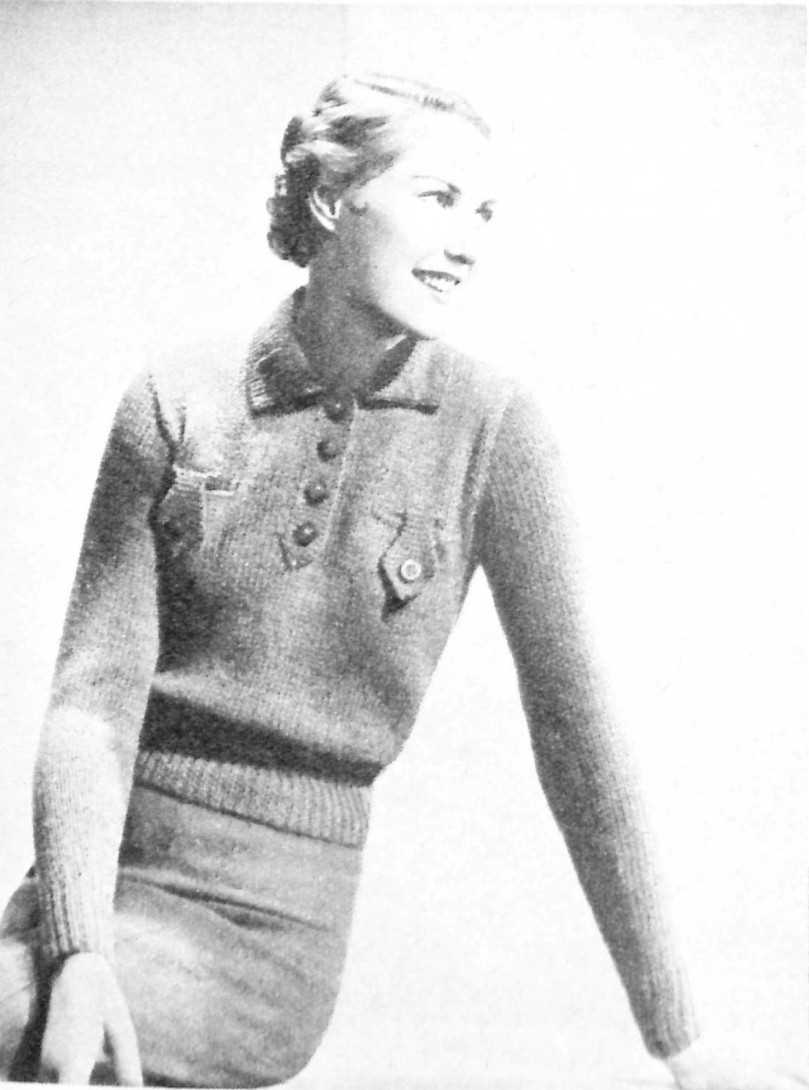
If you’re a fan of vintage fashion and want to add a touch of nostalgia to your wardrobe, look no further than 1930s knitting patterns. The 1930s were a time when knitting was at its peak in popularity, and patterns from this era showcase the elegant and glamorous style of the time.
During the 1930s, knitted clothing was not just for warmth, but also a fashion statement. Women would often knit their own sweaters, cardigans, and accessories, creating unique and stylish pieces that reflected their personal taste. The knitting patterns from this era are not only beautiful, but also a part of fashion history.
One of the most notable features of 1930s knitting patterns is the use of intricate designs and stitches. From delicate lace patterns to bold and geometric patterns, these knitwear designs were works of art. Knitted dresses, gloves, and hats were adorned with elegant details, making them stand out and exude a sophistication that is still admired today.
If you’re looking to recreate the fashion of the 1930s, or simply want to knit a piece with a vintage flair, exploring knitting patterns from this era is a must. Whether you’re a seasoned knitter or a beginner, there are plenty of patterns available that will help you bring a touch of 1930s fashion into your own wardrobe.
Discover the Charm of 1930s Knitting Patterns

If you are a knitting enthusiast or simply appreciate the beauty of vintage fashion, exploring 1930s knitting patterns is a must. These patterns capture the essence of an era that was defined by elegance, femininity, and intricate craftsmanship. Whether you are looking to recreate an authentic 1930s garment or add a touch of vintage flair to your modern wardrobe, these patterns offer a delightful journey into the past.
Timeless Elegance: 1930s knitting patterns are known for their timeless elegance. The designs often feature delicate lacework, intricate cables, and intricate stitch patterns that create intricate and sophisticated garments. Knitted cardigans with scalloped edges, beaded dresses, and lace shawls are some of the iconic pieces from this era that continue to inspire designers and knitters today.
Feminine Charm: The 1930s were all about celebrating femininity, and this is evident in the knitting patterns from the era. From flirty peplum tops and dainty collars to figure-hugging sweaters and elegant gloves, these patterns emphasize the feminine silhouette and highlight the beauty of the female form. Knitting these garments not only allows you to showcase your knitting skills but also adds a touch of feminine charm to your wardrobe.
- Attention to Detail: 1930s knitting patterns are renowned for their attention to detail. Knitters in the 1930s took pride in their craftsmanship and paid careful attention to every stitch. The patterns often include intricate stitch patterns, embroidery, and beading, allowing knitters to create truly unique and exquisite garments. Knitting a 1930s pattern allows you to immerse yourself in this attention to detail and create a piece that is both beautiful and memorable.
- A Journey Into the Past: Knitting 1930s patterns is not just about creating beautiful garments; it is also a journey into the past. It allows you to connect with the knitters of that era, appreciate the skills and techniques that were valued, and gain a deeper understanding of the history of knitting. It is a way to honor the craftsmanship of the past and keep alive the traditions and techniques that were cherished during this time.
So, whether you are a seasoned knitter or just starting out, exploring 1930s knitting patterns is a delightful experience. The beauty, elegance, and attention to detail found in these patterns are sure to inspire and captivate you. Embrace the charm of the 1930s and create something truly special with these timeless designs.
Popular Designs of 1930s Knitting Patterns
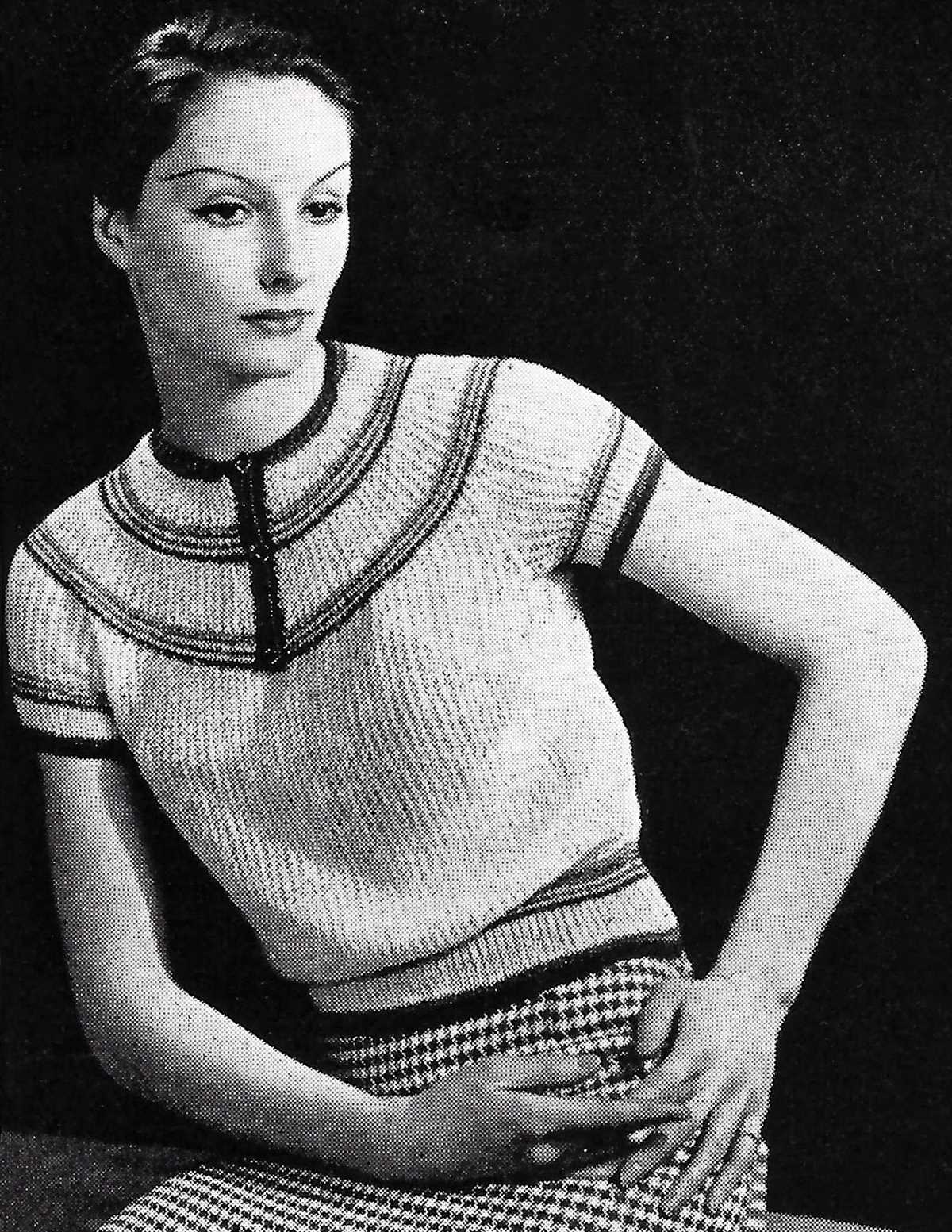
In the 1930s, knitting patterns were all the rage, with women embracing the art of knitting and creating beautiful garments for themselves and their loved ones. During this era, several popular designs emerged, each showcasing the style and elegance of the time.
Art Deco Sweaters: One of the most iconic knitting patterns of the 1930s was the Art Deco sweater design. These sweaters featured geometric shapes, bold colors, and intricate patterns, reflecting the influence of the Art Deco movement. Knitters could choose from designs with chevrons, diamonds, zigzags, or other motifs that embodied the modern and glamorous aesthetic.
Hollywood-Inspired Cardigans: The 1930s were the golden age of Hollywood, and this influence could be seen in the knitting patterns of the time. Cardigans inspired by glamorous movie stars like Jean Harlow and Greta Garbo were highly sought after. These cardigans featured elegant details such as beading, lacework, or embroidery, adding a touch of sophistication to any outfit.
Classic Fair Isle: Fair Isle knitting also gained popularity during the 1930s. This technique originated from the Fair Isle, a small island in Scotland known for its intricate stranded colorwork patterns. Knitters in the ’30s incorporated Fair Isle motifs into their sweaters, hats, and gloves, creating timeless and cozy pieces that are still beloved today.
Chic Berets: Another popular knitting pattern of the 1930s was the beret. This stylish accessory was often adorned with decorative buttons, bows, or feathers, adding a touch of flair to any outfit. Knitters could choose between various designs, from simple and classic to more elaborate and playful styles.
Accessories with Pom-Poms: Pom-poms were a whimsical and popular embellishment during the 1930s. Knitting patterns for scarves, hats, and even mittens often included instructions for adding pom-poms. These playful details added a fun and festive touch to winter accessories, making them stand out in a crowd.
How to Choose Yarn for 1930s Knitting Projects

When embarking on a knitting project inspired by the 1930s, it is essential to select the appropriate yarn to achieve an authentic vintage look. The yarn used during this era was mainly natural fiber, such as wool and cotton, providing durability and warmth for the garments.
Wool: Wool was the most commonly used yarn in the 1930s knitting projects. It was valued for its warmth and ability to hold the stitch definition. When choosing wool yarn for your project, opt for medium-weight yarn such as sport or worsted weight. Look for yarn that has a soft texture and a slight sheen, similar to the yarns available during that time.
Cotton: Another popular yarn choice for 1930s knitting projects was cotton. Cotton yarn provided a lighter weight option for garments suitable for the warmer months. Look for cotton yarn with a smooth texture and a matte finish to achieve an authentic 1930s look.
Blend Yarns: In the 1930s, blend yarns made from a combination of wool and other fibers started to gain popularity. These blends often included silk or rayon, adding a luxurious drape and sheen to the finished garments. When selecting blend yarns for your project, ensure that the wool content is dominant to maintain the vintage aesthetic.
Color: Color selection is a crucial aspect of recreating the 1930s knitting style. During this era, pastel shades such as pale pink, baby blue, lavender, and mint green were highly fashionable. Earthy tones like beige, brown, and olive green were also commonly used. Stick to these traditional color palettes to capture the essence of the time period.
Swatch and Sample: Before starting your 1930s knitting project, make sure to swatch with your chosen yarn to determine the gauge and achieve the correct tension. This will ensure that the final product matches the desired measurements and appearance. Additionally, it is crucial to wash and block the swatch to evaluate the yarn’s behavior and durability.
By carefully selecting the appropriate yarn for your 1930s knitting project, you can recreate the style and elegance of this era in your finished garments. Whether you choose wool, cotton, or a blend yarn, the key is to find yarns that resemble the textures and colors used during the 1930s. Happy knitting!
Techniques Used in 1930s Knitting Patterns
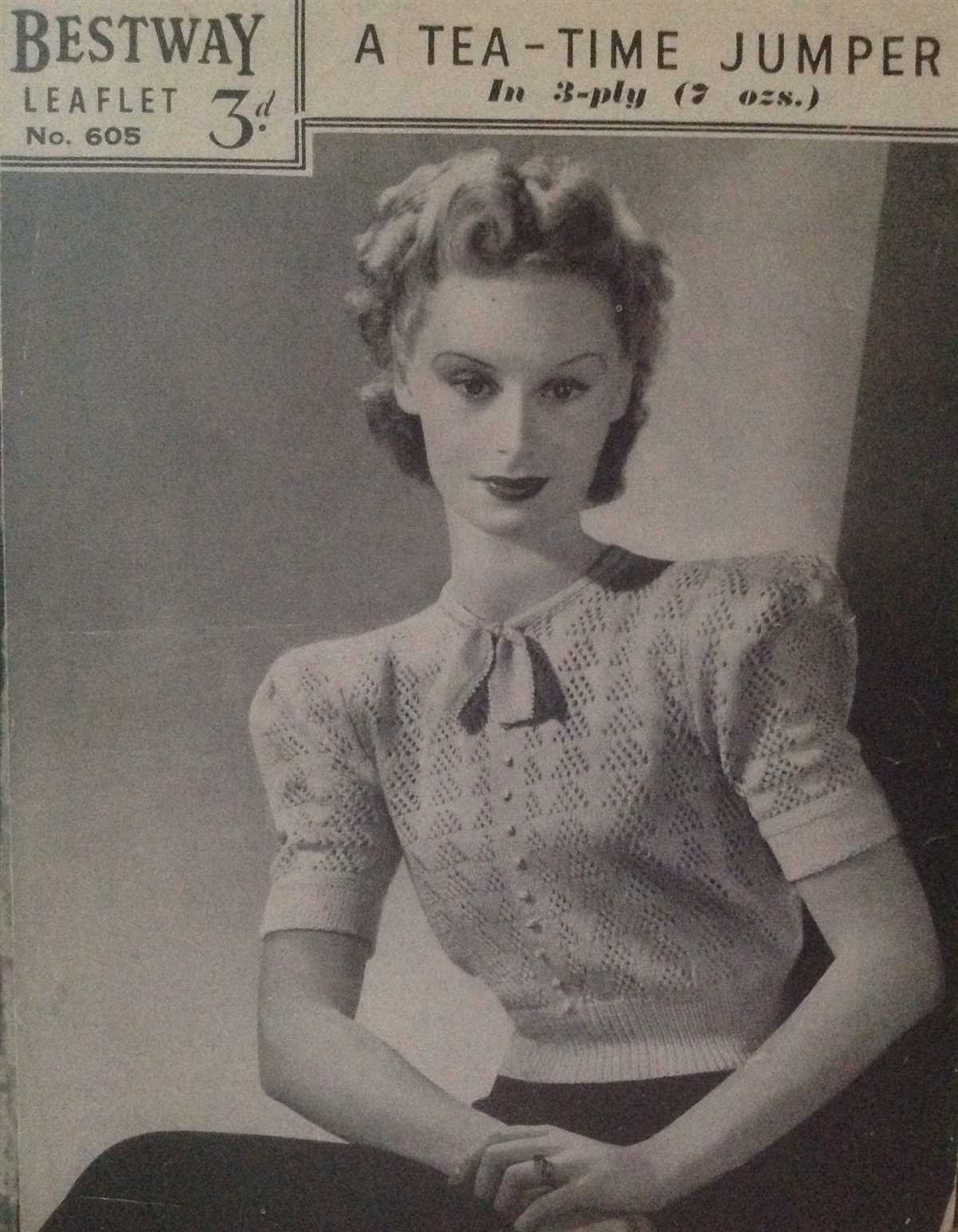
In the 1930s, knitting patterns were popular among women as a way to create their own fashionable garments. These patterns often featured a variety of techniques that allowed knitters to create intricate and unique designs. One commonly used technique was lace knitting, which involved creating delicate and openwork patterns using yarn overs and decreases. This technique was often used to create elegant collars, cuffs, and edgings.
Another technique commonly seen in 1930s knitting patterns was colorwork, which involved using multiple colors of yarn to create patterns and motifs. Fair Isle knitting, also known as stranded knitting, was particularly popular during this time. This technique involved carrying two different-colored yarns across the row, creating a double-layered fabric that was both warm and visually striking. Knitters would create symmetrical patterns using different colors, often incorporating geometric shapes and floral motifs.
Cable knitting was another technique frequently used in 1930s knitting patterns. This technique involved crossing stitches over each other to create twisted rope-like designs. Cable patterns were often used to create cozy and textured sweaters, scarves, and hats. Knitters would use cable needles to hold stitches in the front or back while crossing them, creating intricate and three-dimensional patterns.
Seams played a significant role in 1930s knitting patterns, as many garments were constructed in pieces and then sewn together. Knitters would need to carefully follow the pattern instructions to ensure the correct shaping and dimensions of each piece. Seams were usually sewn using a mattress stitch, which created an invisible join between pieces and provided a clean and professional finish.
In summary, 1930s knitting patterns utilized a range of techniques including lace knitting, colorwork, cable knitting, and the use of seams. These techniques allowed knitters to create intricate and fashionable garments that were both warm and stylish. Today, these techniques continue to be used and appreciated by knitters inspired by the fashion of the past.
Styling Tips for Wearing 1930s Knitted Garments Today
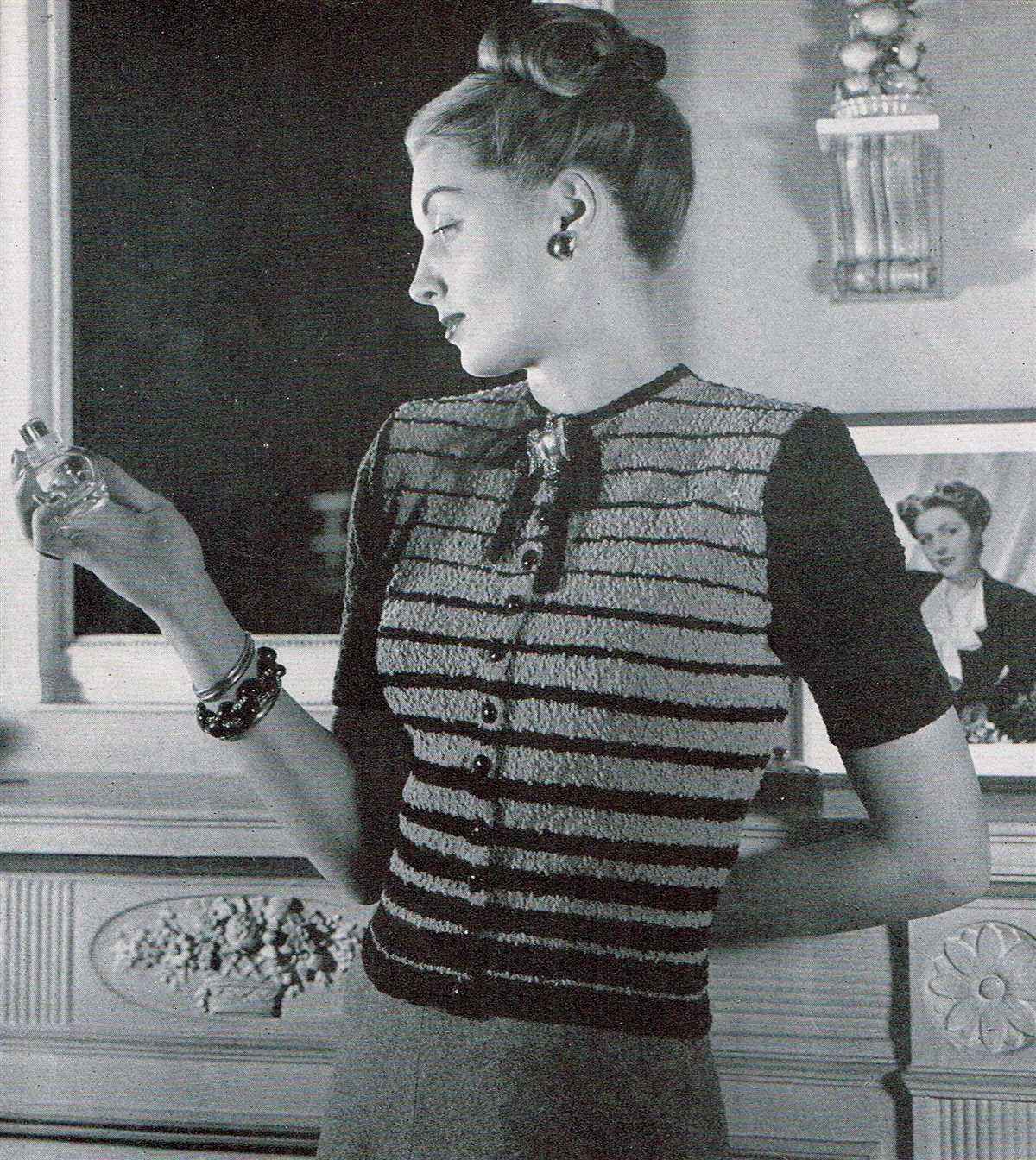
From soft, figure-hugging sweaters to elegant, lacy dresses, 1930s knitting patterns offer a wide range of stylish garments that can be worn with a modern twist. Whether you want to channel the sophisticated and glamorous look of the era or add a touch of vintage charm to your everyday outfits, here are some styling tips to help you wear 1930s knitted garments today.
1. Pair with High-Waisted Bottoms: The 1930s were known for their high-waisted skirts and pants, so when wearing a knitted top, opt for bottoms that sit at or above your natural waistline. This will create a flattering silhouette and highlight the unique design of your knitted garment.
- 2. Accessorize with Vintage-inspired Pieces: To enhance the vintage feel of your 1930s knitted garment, accessorize with pieces that reflect the era. Think about adding a cloche hat, gloves, or a chunky statement necklace. These small touches can make a big impact on your overall look.
- 3. Mix and Match with Modern Pieces: Don’t be afraid to mix and match your 1930s knitted garments with modern pieces from your wardrobe. Pair a knitted cardigan with jeans for a casual yet stylish look, or layer a knitted dress with a leather jacket for an edgy twist. Experimenting with different combinations can create a unique and contemporary outfit.
- 4. Choose Authentic Color Palettes: To achieve an authentic 1930s look, choose color palettes that were popular during that era. Earthy tones, pastels, and jewel tones were commonly used in 1930s knitting patterns. Incorporate these colors into your outfit to capture the essence of the time period.
- 5. Pay Attention to Proportions: When wearing 1930s knitted garments, pay attention to proportions. The era was characterized by a slim and elongated silhouette, so balance your outfit by wearing fitted tops with wide-leg pants or full skirts. This will create a visually appealing and balanced look.
By following these styling tips, you can effortlessly incorporate 1930s knitted garments into your modern wardrobe. Embrace the elegance and charm of the era while adding your own personal touch to create a fashion-forward ensemble.
Iconic Knitted Accessories from the 1930s
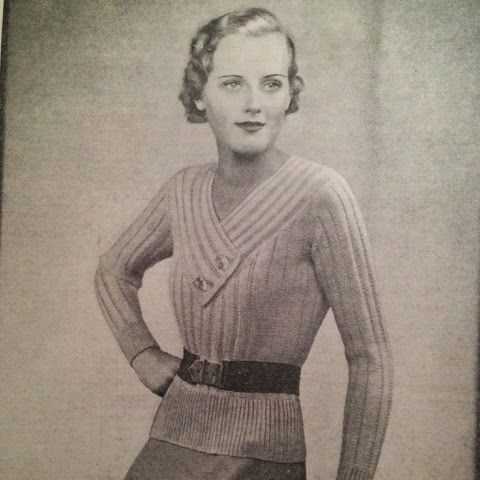
In the 1930s, knitting was a popular pastime for women, providing both a creative outlet and a way to add fashionable accessories to their wardrobes. Knitted accessories from this era showcased intricate patterns and exquisite craftsmanship. Many of these designs have stood the test of time and continue to be cherished and sought after today.
1. Cloche hats: One of the most iconic accessories of the 1930s was the cloche hat, and knitted versions were all the rage. These hats were known for their close-fitting bell shape, which perfectly framed the face, and were often adorned with decorative elements such as bows or flowers.
2. Gloves: Knitted gloves were not only practical for keeping hands warm, but they also added a touch of elegance to any outfit. Fingerless gloves were particularly popular during the 1930s, allowing women to keep their hands covered while still having the freedom to use their fingers.
3. Scarves: Knitted scarves became a staple accessory for women in the 1930s. They were often long and lightweight, perfect for draping around the neck in various stylish ways. Scarves made from soft, luxurious yarns were highly coveted, adding a touch of sophistication to any ensemble.
4. Berets: Berets were another fashionable accessory of the 1930s, and knitted versions were no exception. These hats were typically made of wool and featured a slouchy, relaxed fit. They were often embellished with pom-poms or decorative stitches to add an extra touch of flair.
5. Collars: Knitted collars were a popular way to add a touch of elegance to a plain blouse or dress. These detachable accessories were often intricately patterned and could be easily fastened with buttons or ribbons. They were a versatile and stylish addition to any outfit.
- Conclusion: The 1930s were a time when knitted accessories were highly sought after, with women eager to add a touch of elegance and sophistication to their outfits. The cloche hats, gloves, scarves, berets, and collars of this era showcased the craftsmanship and attention to detail that were characteristic of 1930s fashion. Today, these iconic knitted accessories continue to inspire designers and fashion enthusiasts alike, proving that classic styles never go out of fashion.
Knitting Patterns for 1930s Childrenswear
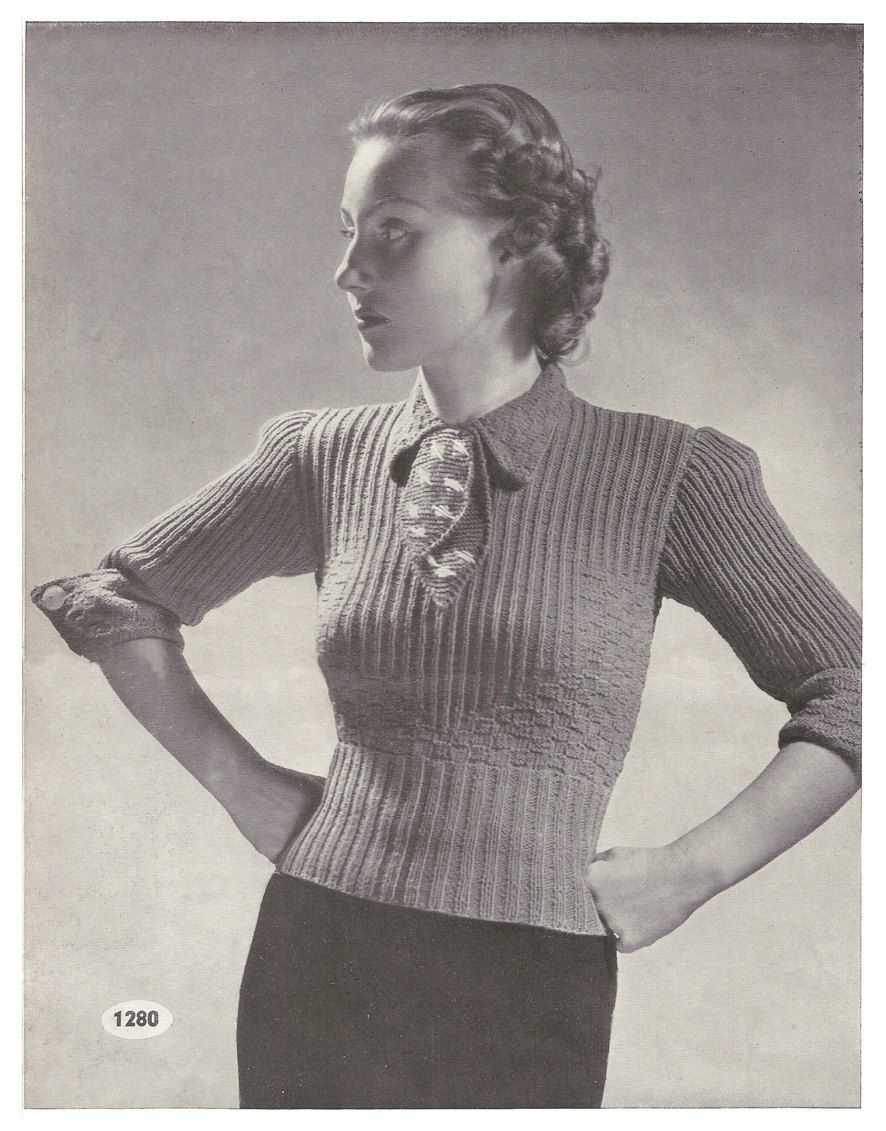
The 1930s was a decade of change and economic hardship, yet it also brought forth a sense of style and creativity. Knitting became a popular pastime for mothers and grandmothers who sought to create beautiful and practical clothing for their children. Knitting patterns for 1930s childrenswear reflected the fashion trends of the time, featuring timeless designs that continue to inspire modern knitters.
Classic Sweaters: Knitted sweaters were a staple in the wardrobe of every child in the 1930s. These sweaters were often simple in design, with ribbed cuffs and a crew neck. The patterns featured in knitting magazines and books of the time provided instructions for a range of sizes, from infants to older children. Sweaters were typically knitted in soft, natural fibers such as wool or cotton, making them comfortable and warm for the colder months.
Adorable Dresses: Girls’ dresses of the 1930s were often made with delicate details and feminine silhouettes. Knitting patterns for childrenswear in this era often included instructions for dresses with puff sleeves, lace trims, and intricate stitch patterns. These dresses were typically worn with matching or coordinating cardigans, creating a complete and stylish outfit. Knitting these dresses allowed mothers to create unique and personalized garments for their daughters, while also showcasing their knitting skills.
Cozy Accessories: In addition to sweaters and dresses, knitting patterns for childrenswear in the 1930s also included a variety of cozy accessories. Hats, scarves, and mittens were essential for keeping children warm during the winter months. These accessories were often embellished with fun and playful details such as tassels, pom-poms, and decorative stitch patterns. Knitting these accessories allowed mothers to add a touch of warmth and style to their children’s outfits, while also providing practical protection from the cold.
Timeless Style: The knitting patterns for 1930s childrenswear may be several decades old, but they have a timeless appeal that continues to captivate knitters today. The simple, yet elegant designs of the era are classic and versatile, making them suitable for both vintage-inspired looks and modern fashion. Knitting patterns from the 1930s remind us of a simpler time, when handmade garments were treasured and passed down through generations. With the resurgence of knitting and the popularity of vintage fashion, these patterns are once again in demand, allowing knitters to recreate the charm of 1930s childrenswear and create heirloom-quality garments for their little ones.
Recreating 1930s Knitting Patterns: Tips and Tricks
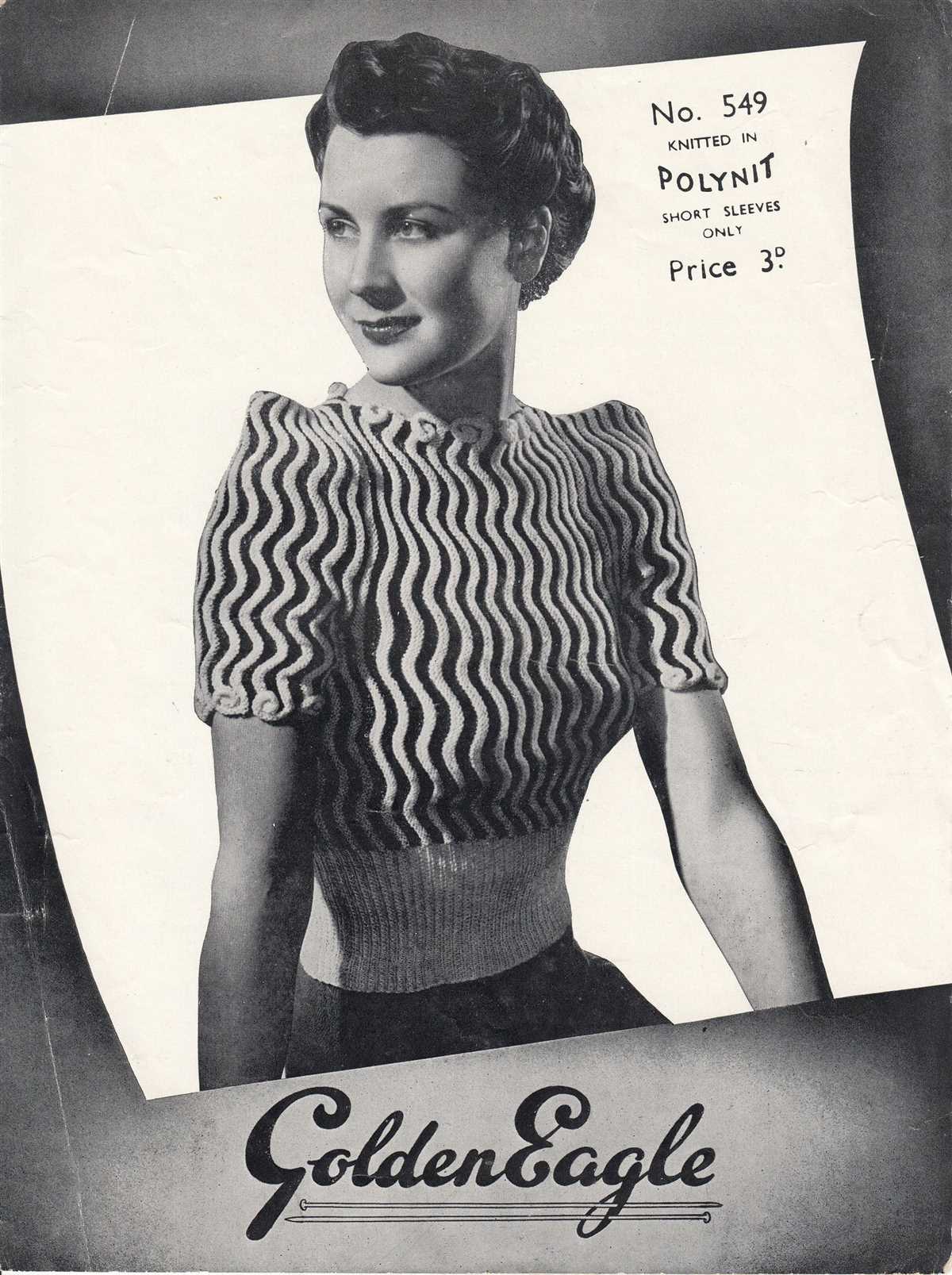
The 1930s were a time of elegance and sophistication in fashion, and knitting patterns from this era reflect that. If you’re interested in recreating the look and feel of the 1930s in your knitting projects, there are several tips and tricks you can keep in mind.
Choose the right yarn: To achieve an authentic 1930s look, it’s important to select yarn that closely matches the materials commonly used during that time period. Opt for natural fibers like wool, cotton, or silk, as synthetic fibers were not as prevalent in the 1930s.
Focus on intricate stitch patterns: Knitting patterns from the 1930s often featured intricate stitch patterns that added texture and visual interest. Look for patterns that incorporate lace, cables, or unique stitch combinations. Experimenting with these stitch patterns will help you achieve a more authentic 1930s look.
Pay attention to garment silhouettes: The 1930s were known for their feminine and figure-flattering silhouettes. When choosing knitting patterns, look for designs that feature waist definition, flared skirts, and fitted bodices. By paying attention to these details, you can recreate the iconic 1930s silhouette in your knitwear.
Experiment with color: While the 1930s are often associated with muted and neutral colors, there was also a trend towards bold and vibrant hues during this time. Don’t be afraid to experiment with both traditional and unconventional color choices in your knitting projects. Look for knitting patterns that feature colorwork or incorporate contrasting shades to add visual interest.
Embrace vintage details: To truly capture the essence of the 1930s in your knitting projects, pay attention to the finer vintage details. Consider adding delicate buttons, ribbons, or decorative trims to your finished garments. These small touches can make a big difference in achieving an authentic 1930s look.
Seek inspiration from vintage patterns: One of the best ways to recreate 1930s knitting patterns is to study and seek inspiration from the original vintage patterns. Many vintage knitting pattern books and magazines from the 1930s can still be found today. They often feature detailed instructions and beautiful photography, providing valuable guidance for recreating the authentic styles of the era.
By following these tips and tricks, you can bring the elegance and charm of the 1930s to your knitting projects. Whether you’re knitting a sweater, hat, or scarf, incorporating the style elements from this iconic era will create truly unique and timeless pieces.
Knitting Communities and Resources for 1930s Knitting Enthusiasts
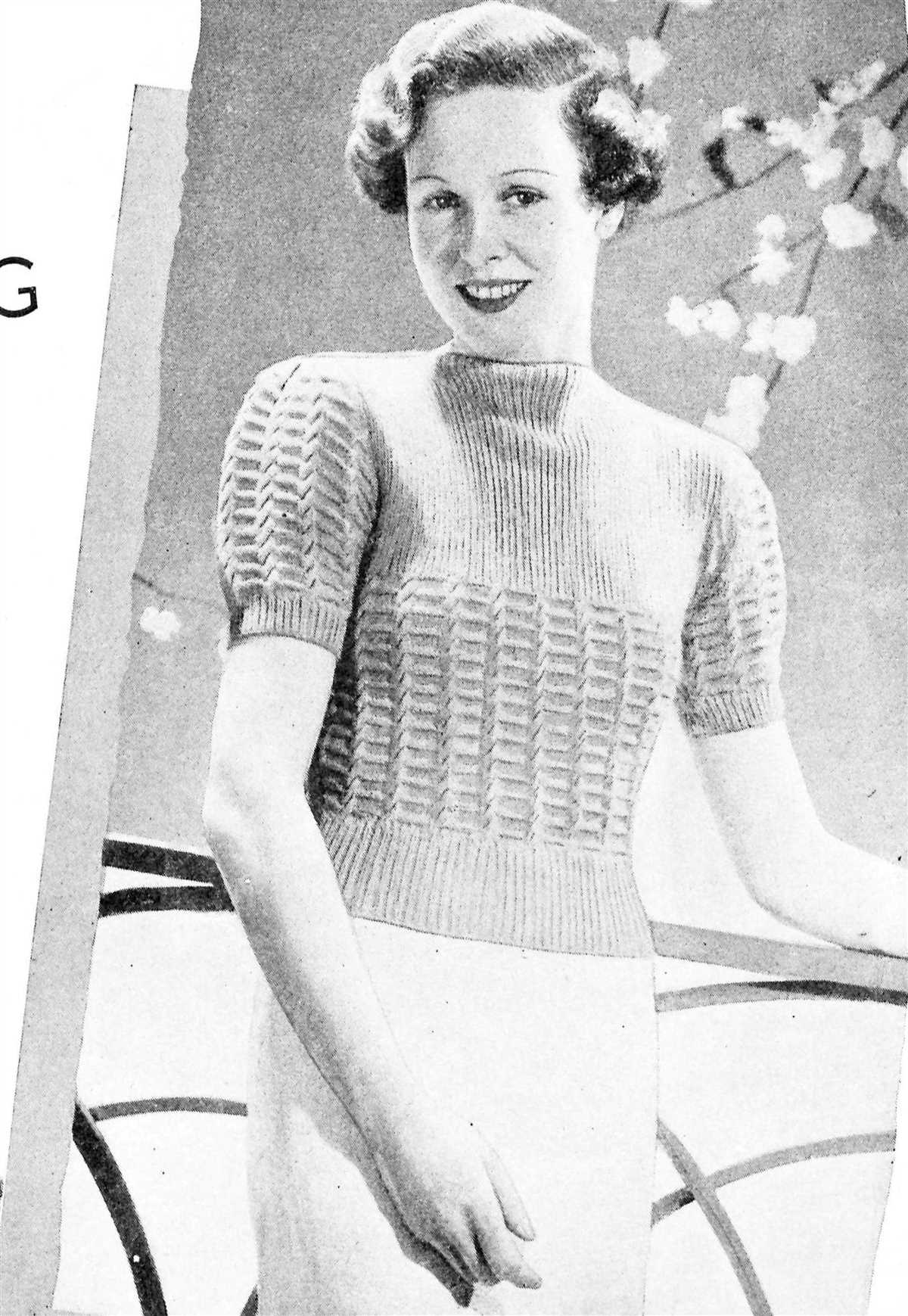
In the 1930s, knitting was a popular pastime for many women, providing a creative outlet and a way to make stylish and practical garments for the family. Knitting groups and communities flourished during this time, offering knitters the opportunity to connect with others who shared their passion for the craft. These communities served as a valuable resource for exchanging ideas, sharing patterns, and providing support and encouragement.
One of the most well-known knitting communities of the 1930s was the Knit and Natter Club, which met regularly to knit, chat, and enjoy each other’s company. Members of the club would bring their knitting projects and could seek advice or assistance from more experienced knitters. The club also organized special events, such as knitting contests and fashion shows, where members could showcase their creations and inspire others with their skills.
Online Knitting Resources
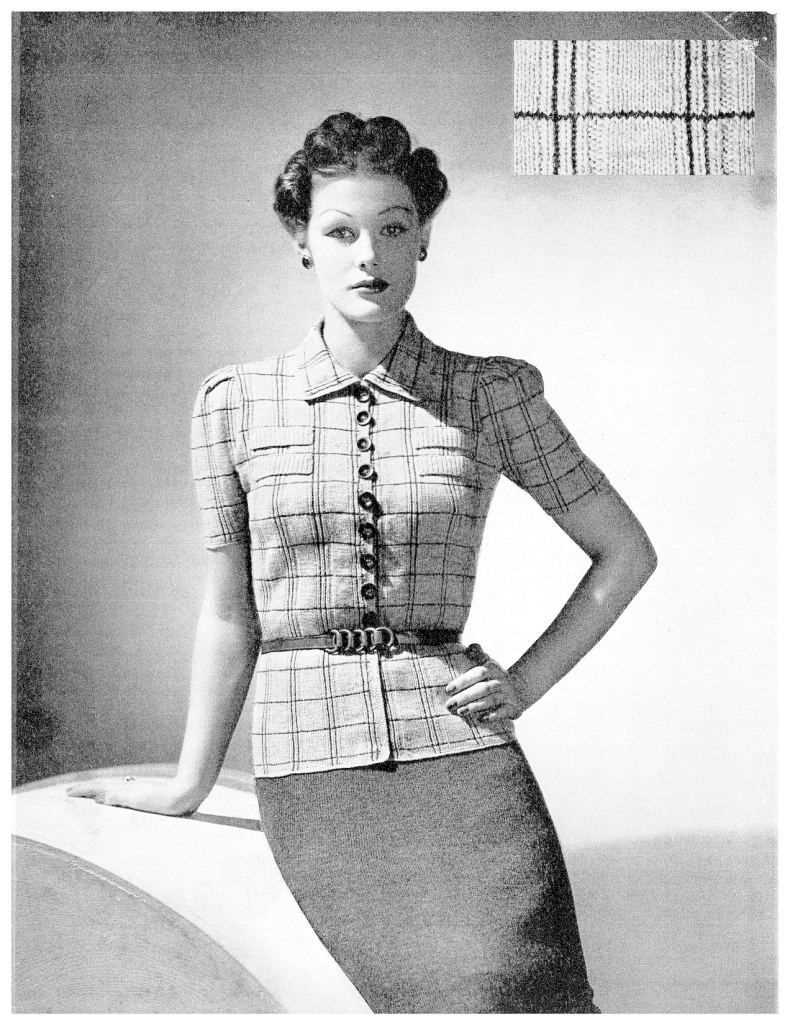
While many knitting communities in the 1930s were based on in-person gatherings, modern knitting enthusiasts can now benefit from a variety of online resources that cater to their interests. Websites like Vintage Knitting Patterns Archive offer a vast collection of digitized knitting patterns from the 1930s and other eras. These patterns are a valuable source of inspiration for knitters looking to recreate the fashion trends of the time or put their own spin on classic designs.
For those who prefer a more interactive experience, online forums and social media groups dedicated to 1930s knitting are a great way to connect with like-minded individuals. These platforms allow knitters to share their projects, ask for advice, and participate in virtual knit-alongs. They also provide a space for sharing rare or out-of-print knitting books and patterns, ensuring that these valuable resources are preserved and accessible to future generations of knitting enthusiasts.
Whether through in-person gatherings or online platforms, knitting communities and resources continue to play a vital role in preserving and promoting the art of knitting from the 1930s. They provide a sense of camaraderie, a wealth of knowledge, and a source of inspiration for knitters of all skill levels.
Embracing the Nostalgia: Creating Modern Designs inspired by 1930s Knitting Patterns

As we look back at the beautiful and intricate knitting patterns of the 1930s, it is clear that they hold a timeless appeal. The nostalgia and charm of these designs continue to captivate knitters today. While the 1930s knitting patterns were created in a different era, they can still be a source of inspiration for modern knitters.
Modern designers have taken these vintage patterns and incorporated them into their own unique creations, giving them a fresh and contemporary twist. By combining elements from the past with modern techniques and materials, these designers have managed to create stunning designs that pay homage to the 1930s while remaining relevant and fashionable.
One way that modern designers have embraced the nostalgia of 1930s knitting patterns is by recreating the iconic silhouettes of the era. The fitted cardigans, elegant dresses, and classic accessories have been reimagined using modern yarns and construction techniques. This allows for greater flexibility in terms of sizing and customization, making these designs accessible to a wider range of knitters.
Creating modern designs inspired by 1930s knitting patterns is not just about recreating the past, but also about incorporating innovative techniques and materials. The use of different yarn weights, textures, and colors can breathe new life into traditional patterns and give them a contemporary feel. Knitters can experiment with different fibers, such as mohair or alpaca, to add a luxurious touch to their designs, or try their hand at colorwork to create visually stunning pieces.
Another way to embrace the nostalgia of 1930s knitting patterns is by incorporating modern twists into the finished garments. For example, adding a modern closure option, such as a zipper or a button, can make a vintage-inspired cardigan more practical and functional for today’s wearer. Knitters can also experiment with different stitch patterns and embellishments to add their own personal touch to the design.
In conclusion, the 1930s knitting patterns continue to inspire and captivate knitters today. By embracing the nostalgia of these patterns and incorporating modern techniques and materials, designers have created stunning and contemporary designs that pay homage to the past while remaining relevant and fashionable. Whether you’re a beginner or an experienced knitter, exploring the world of 1930s knitting patterns can be a fulfilling and rewarding journey.